Beyond the Hype: Real-World Problem-Solving with AI Generative in Software Development & Automation

AI Generative is rapidly moving beyond the hype, offering tangible solutions to real-world challenges in software development and automation. This article delves into the practical applications of AI Generative technologies, showcasing how they are being leveraged to solve critical problems, boost efficiency, and drive innovation. We'll explore how AI software developers are using these tools to streamline workflows, automate repetitive tasks, and ultimately, create better software, faster.
From intelligent code completion to automated testing and deployment, discover how automation AI is reshaping the software development lifecycle. We'll examine specific use cases, highlight proven strategies, and offer insights into how your organization can harness the power of generative AI software to gain a competitive edge. This isn't just about the future of software; it's about solving today's problems with intelligent, adaptable solutions. We aim to provide a clear understanding of the benefits and address the challenges of integrating generative AI into existing development processes.
AI Generative: Solving Real-World Software Development Challenges
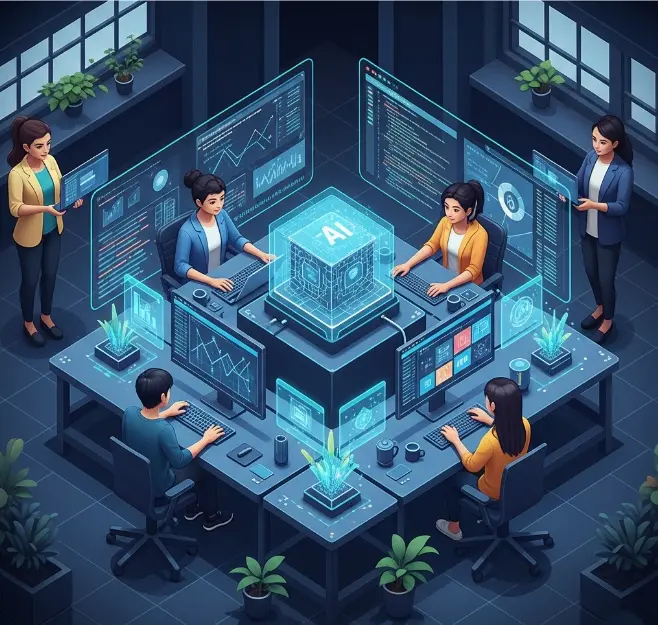
Software development faces persistent challenges such as long development cycles, a shortage of skilled developers, and the need for higher code quality. AI generative technologies are emerging as powerful tools to overcome these hurdles. They offer solutions that can automate repetitive tasks, assist in code generation, and enhance the overall efficiency of the development process. The goal is to enable developers to focus on more complex and creative aspects of their work.
The integration of AI generative tools directly addresses the skills gap in the software industry. These tools empower existing developers to achieve more, augmenting their capabilities and allowing them to handle larger and more complex projects. This augmentation is particularly valuable for small and medium-sized businesses that may not have the resources to hire specialized AI software developers. Automation through automation AI can level the playing field, allowing smaller teams to compete with larger organizations.
By providing practical solutions for common software development challenges, AI generative technologies are transforming the way software is created and maintained. The emphasis is on leveraging these tools to solve real-world problems, rather than simply pursuing the latest technological trends. This pragmatic approach ensures that the adoption of AI in software development leads to measurable improvements in efficiency, quality, and innovation.
AI-Powered Automation: Streamlining Code Generation and Testing
One of the most impactful applications of AI generative is in the automation of code generation and testing. AI-powered tools can assist in generating code snippets, completing code blocks, and even creating entire functions based on natural language descriptions. This automation significantly reduces the time and effort required for coding, allowing developers to focus on higher-level tasks such as architectural design and problem-solving.
AI also plays a crucial role in streamlining the testing process. Automation AI tools can automatically generate test cases, identify potential bugs, and suggest fixes, significantly improving software quality and reducing the risk of errors. AI-driven testing systems can analyze metrics from previous testing and problems to offer continuous suggestions for improvement, ultimately leading to more robust and reliable software.
By automating these key aspects of the software development lifecycle, AI generative technologies free up developers to focus on innovation and creativity. The result is faster development cycles, higher quality code, and a more efficient use of resources. This transformation is essential for organizations looking to stay competitive in today's rapidly evolving software landscape.
Addressing the Skills Gap: How AI is Augmenting AI Software Developers
The shortage of skilled AI software developers is a significant challenge for many organizations. Generative AI offers a solution by augmenting the capabilities of existing developers, allowing them to take on more complex tasks and projects. By automating routine coding tasks, AI generative tools free up developers to focus on higher-level problem-solving, system integration, and strategic decision-making.
AI-powered tools provide developers with real-time assistance, suggesting code completions, identifying potential bugs, and offering solutions to common problems. This support not only increases productivity but also helps developers learn and improve their skills. Automation AI acts as a virtual assistant, providing guidance and support throughout the development process.
This augmentation approach addresses the skills gap by empowering developers to achieve more with the resources they have. It enables organizations to tackle complex projects without the need for extensive hiring, making it a cost-effective solution for businesses of all sizes. The focus is on leveraging AI to enhance human capabilities, rather than replacing them altogether.
How AI Generative is Transforming Software Development: Practical Solutions
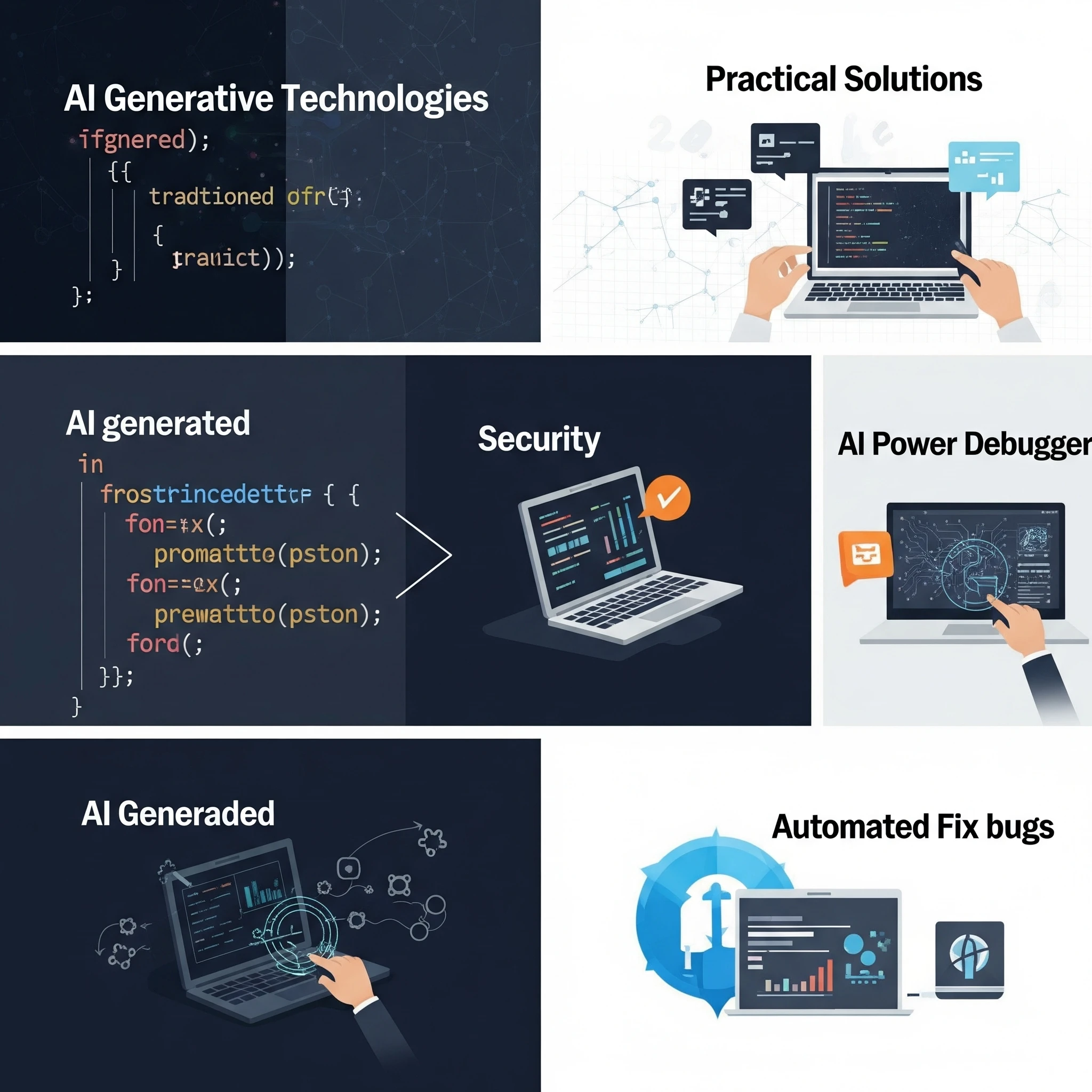
AI Generative is rapidly changing the landscape for AI software developers, offering unprecedented opportunities to enhance productivity and streamline workflows. By automating repetitive coding tasks, generating code snippets, and aiding in debugging, generative AI software allows developers to focus on higher-level problem-solving and architectural design. This shift not only accelerates the development lifecycle but also reduces costs and improves software quality, enabling teams to deliver innovative solutions faster and more efficiently. The integration of automation AI tools into the development process means that developers can spend less time on mundane tasks and more time on creating strategic, value-added features.
One of the most significant impacts of AI Generative is its ability to tackle complex problems in AI software development. From suggesting optimal architectures and UI/UX layouts to generating test cases and documentation, generative AI provides practical solutions that enhance every stage of the software development lifecycle (SDLC). This automation AI approach allows for continuous improvement and optimization, ensuring that software projects remain on track and meet the evolving needs of users. By leveraging AI software developers can also improve project management, allocate resources more efficiently, and make data-driven decisions that drive success.
AI Generative is not just a theoretical concept; it offers real-world applications and practical solutions for AI software developers across various industries. Whether it's creating personalized user interfaces, generating code for custom software solutions, or enhancing cybersecurity measures, generative AI software is transforming how software is designed, built, and maintained. By embracing automation AI, companies can deliver more customized products and services, reach new markets, and create new business models. The integration of AI Generative empowers developers to innovate, solve complex challenges, and drive growth in today's rapidly evolving technological landscape.
Accelerating Development Cycles: Generative AI for Rapid Prototyping
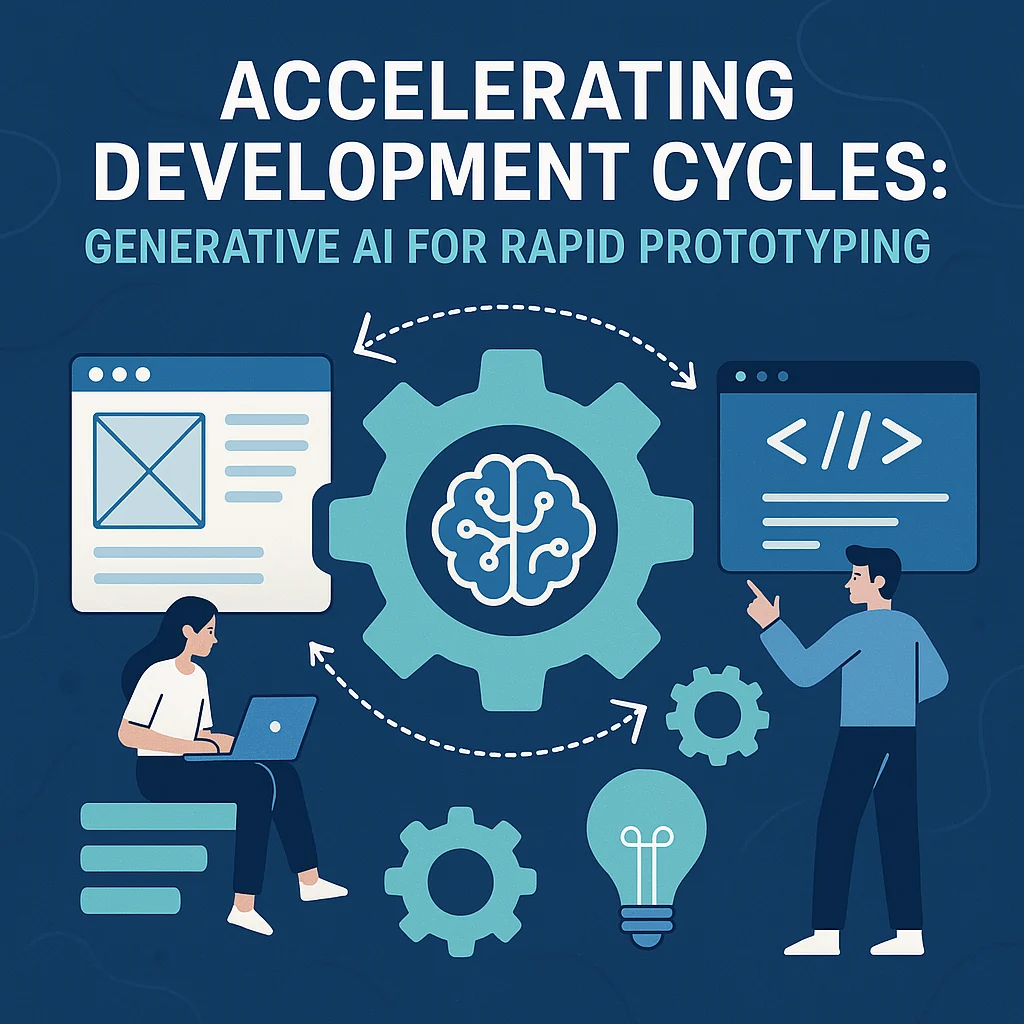
AI generative technologies are revolutionizing rapid prototyping by significantly accelerating the speed at which developers can create and iterate on new software ideas. These tools enable the generation of wireframes, mockups, and even functional prototypes from natural language descriptions, drastically reducing the time required for initial design and development. This acceleration allows teams to quickly test concepts and gather feedback, leading to more informed decisions and better end products.
By automating the creation of boilerplate code and UI elements, automation AI allows developers to focus on the unique aspects of their projects. This means more time can be spent on refining user experiences, implementing complex logic, and ensuring that the software meets the specific needs of its users. Rapid prototyping with generative AI facilitates a more agile and iterative development process, allowing teams to adapt quickly to changing requirements and market conditions.
The ability to quickly generate and test prototypes is a game-changer for software development. AI generative technologies empower developers to explore a wider range of ideas, identify potential issues early in the development process, and ultimately deliver better software faster. This acceleration is essential for organizations looking to innovate and stay ahead of the competition.
Enhancing Code Quality: AI-Driven Bug Detection and Prevention
Ensuring high code quality is a critical aspect of software development, and AI generative technologies are playing an increasingly important role in this area. AI-driven tools can automatically scan codebases for potential bugs, security flaws, and style inconsistencies, providing developers with real-time feedback and suggestions for improvement. This proactive approach helps to identify and fix issues early in the development process, reducing the risk of costly errors later on.
By analyzing code patterns and identifying potential vulnerabilities, automation AI tools can help developers write more secure and reliable software. These tools can also generate test cases and predict which tests are most likely to fail, allowing developers to focus their testing efforts on the areas that need it most. This targeted approach to testing improves the overall quality of the software and reduces the time and effort required for manual testing.
The use of AI in bug detection and prevention is transforming the way software is developed and maintained. AI generative technologies empower developers to write better code, reduce the risk of errors, and deliver higher quality software to their users. This improvement in code quality leads to greater user satisfaction, reduced maintenance costs, and a more robust and reliable software ecosystem.
From Hype to Reality: Problem-Solving with AI Generative in Automation
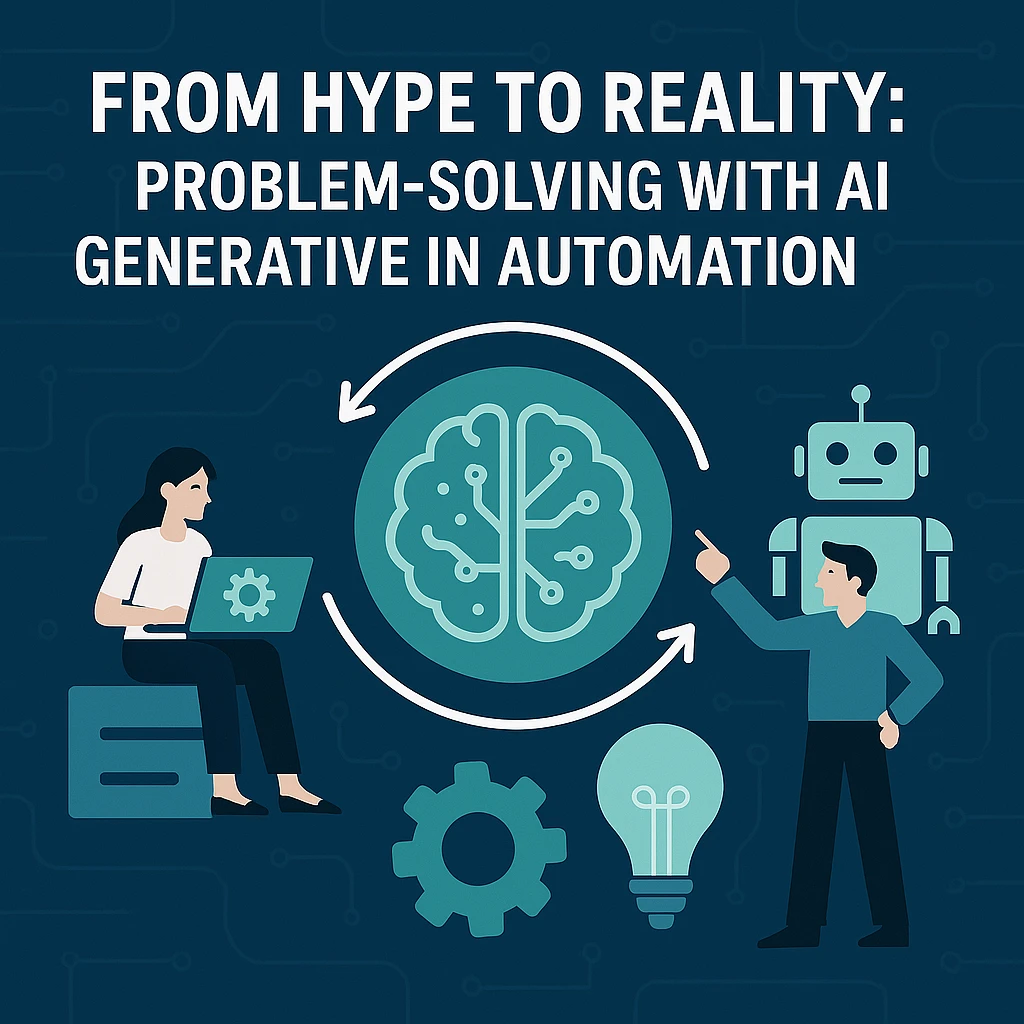
The initial hype surrounding AI Generative is now giving way to tangible results, as organizations begin to realize the potential of these technologies for problem-solving in automation. By focusing on specific challenges and implementing AI-driven solutions, businesses can move past the theoretical possibilities and achieve measurable improvements in efficiency, quality, and innovation. The key is to identify the right problems and leverage AI to develop practical, effective solutions.
One of the most promising areas for AI Generative is in the automation of complex processes. AI-powered tools can analyze data, identify patterns, and make decisions in real-time, enabling businesses to automate tasks that were previously impossible to automate. This includes tasks such as fraud detection, risk management, and customer service. By automating these processes, businesses can reduce costs, improve accuracy, and free up valuable resources.
This section explores the real-world applications of AI Generative in automation, providing insights into how these technologies can be used to solve specific problems and achieve tangible results. The emphasis is on practical, actionable strategies that businesses can implement to leverage AI for automation and drive meaningful improvements in their operations. By focusing on problem-solving, businesses can move past the hype and unlock the true potential of AI.
Automating Repetitive Tasks: Freeing Up Developers for Innovation
One of the key benefits of AI generative technologies in software development is their ability to automate repetitive and mundane tasks. This automation frees up developers to focus on more creative and strategic aspects of their work, such as designing new features, solving complex problems, and innovating new solutions. By offloading these repetitive tasks to AI-powered tools, developers can increase their productivity and job satisfaction.
Automation AI can handle tasks such as generating boilerplate code, creating documentation, and performing routine code reviews. These tasks, while essential, can be time-consuming and detract from the more engaging and challenging aspects of software development. By automating these tasks, AI allows developers to focus on the work that truly requires their expertise and creativity.
The result is a more efficient and innovative development process. AI generative technologies empower developers to explore new ideas, experiment with different approaches, and ultimately deliver better software. This shift in focus from repetitive tasks to creative problem-solving is essential for organizations looking to stay competitive and innovative in today's rapidly evolving software landscape.
Generative AI Software: Optimizing DevOps and CI/CD Pipelines

Generative AI software is revolutionizing DevOps and CI/CD pipelines by automating key tasks and optimizing workflows. AI-powered tools can assist in tasks such as monitoring system performance, detecting anomalies, and predicting potential failures, allowing DevOps teams to proactively address issues before they impact users. This automation leads to reduced downtime, lower operational costs, and a better user experience.
By analyzing system logs and identifying recurring issues, automation AI can suggest fixes and optimizations, improving the overall stability and performance of the software. AI-driven tools can also automate the deployment process, ensuring that updates are rolled out smoothly and efficiently. This automation reduces the risk of errors and allows DevOps teams to focus on more strategic initiatives, such as improving infrastructure and security.
The integration of generative AI software into DevOps and CI/CD pipelines is transforming the way software is deployed and maintained. AI-powered tools empower DevOps teams to automate routine tasks, improve system performance, and deliver a better user experience. This transformation is essential for organizations looking to achieve agility, scalability, and reliability in their software development processes.
AI Generative for Software Developers: Automating Solutions for Efficiency
AI Generative is rapidly changing the landscape for software developers, offering powerful tools to automate solutions and enhance overall efficiency. By leveraging AI, developers can significantly reduce the time spent on repetitive tasks, allowing them to focus on more complex and creative aspects of software development. This transformation not only boosts productivity but also improves the quality and reliability of the software being produced.
The focus on automating solutions with AI is driven by the increasing demand for faster development cycles and higher-quality software. AI-powered tools can assist in code generation, bug detection, testing, and deployment, streamlining the entire development process. This means developers can deliver more value in less time, meeting the ever-growing demands of the market.
This section explores the practical applications of AI Generative for software developers, providing insights into how these tools can be effectively integrated into existing workflows. The emphasis is on leveraging AI to solve real-world problems, improve efficiency, and empower developers to achieve more with less effort. By embracing AI, software developers can stay ahead of the curve and deliver innovative solutions that meet the needs of their users.
AI as a Virtual Assistant: Enhancing Developer Productivity
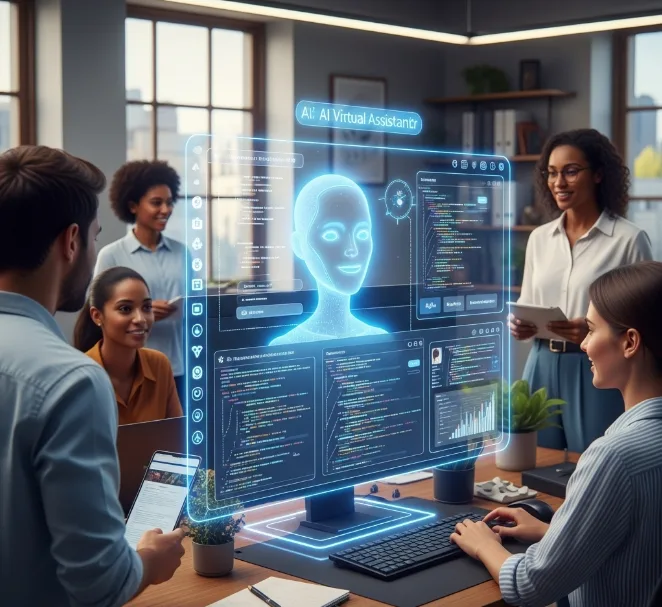

AI generative technologies are increasingly being used as virtual assistants to enhance developer productivity. These AI-powered tools provide real-time assistance, suggesting code completions, identifying potential bugs, and offering solutions to common problems. By acting as a virtual assistant, AI helps developers work more efficiently and effectively.
Automation AI can handle a wide range of tasks, from generating code snippets to creating documentation. This support frees up developers to focus on higher-level problem-solving and creative aspects of their work. AI-powered tools can also provide personalized learning experiences, helping developers improve their skills and stay up-to-date with the latest technologies.
The use of AI as a virtual assistant is transforming the way developers work. By providing real-time assistance and automating routine tasks, AI generative technologies empower developers to achieve more with less effort. This increase in productivity leads to faster development cycles, higher quality code, and a more efficient use of resources.
The Future of Coding: Adapting to AI-Driven Workflows
The future of coding is being shaped by AI generative technologies, which are transforming the way software is developed and maintained. As AI takes on more routine tasks, developers will need to adapt to new workflows and focus on higher-level problem-solving, creativity, and innovation. This shift requires a change in mindset and a willingness to embrace new tools and techniques.
Automation AI will play an increasingly important role in the software development process, handling tasks such as code generation, testing, and deployment. Developers will need to learn how to work alongside AI, leveraging its capabilities to enhance their own skills and productivity. This collaborative approach will lead to faster development cycles, higher quality code, and a more efficient use of resources.
The future of coding is not about replacing developers with AI, but rather about empowering them to achieve more with the help of AI. By adapting to AI-driven workflows, developers can focus on the aspects of their work that truly require their expertise and creativity, leading to a more fulfilling and impactful career.
Conclusion
In conclusion, the integration of AI generative technologies into software development and automation is rapidly evolving from theoretical possibility to practical necessity. The ability of automation AI to streamline code generation, enhance testing, and optimize DevOps processes is transforming the way software is created and maintained. This not only addresses the immediate challenges of faster development cycles and higher code quality but also empowers AI software developers to focus on innovation and strategic problem-solving.
By moving beyond the initial hype and focusing on real-world problem-solving, organizations can unlock the full potential of AI generative. This includes leveraging AI to augment the capabilities of existing developers, automate repetitive tasks, and improve overall efficiency. As AI continues to evolve, it will become an increasingly indispensable tool for software developers, enabling them to achieve more with less effort and deliver innovative solutions that meet the ever-growing demands of the market.
The future of software development lies in the collaborative synergy between human expertise and AI-driven automation. By embracing AI generative technologies and adapting to AI-driven workflows, developers can not only enhance their productivity but also shape the future of coding and innovation. This transformation is essential for organizations looking to stay competitive and deliver high-quality software in today's rapidly evolving technological landscape. The journey from hype to reality is underway, and the potential for AI generative to revolutionize software development and automation is only just beginning to be realized.